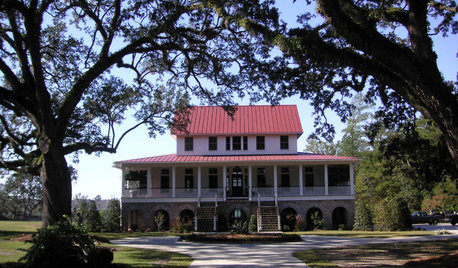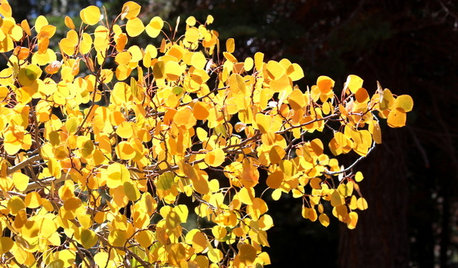Azalea chlorotic leaves - need help
izharhaq
11 years ago
Related Stories

GARDENING GUIDESWhat's Wrong With My Plant? Leaves Often Hold the Clues
Learn how to identify common plant ailments by reading their leaves
Full Story
EARTH DAYHow to Help Your Town’s Beneficial Birds and Bugs
Make a habitat using local materials to provide a home to the creatures that help our gardens
Full Story
LANDSCAPE DESIGNHow to Help Your Home Fit Into the Landscape
Use color, texture and shape to create a smooth transition from home to garden
Full Story
Sixties Southern Style: Inspiration from 'The Help'
Oscar-nominated movie's sets include formal entertaining spaces, front porch breezes and lots of florals
Full Story
LANDSCAPE DESIGNGreat Design Plant: Quaking Aspen for 3-Season Beauty — on Its Own Turf
It offers bright fall foliage, snowy winter bark and lush green leaves in summer. Just don't try to plant quaking aspen away from its home
Full Story
FALL GARDENING11 Trees for Brilliant Fall Color
Give your landscape the quintessential look of autumn with the red, orange and yellow leaves of these standouts
Full Story
MOST POPULAR11 Nominees for the ‘She Shed’ Hall of Fame
These special sanctuaries let busy women get away from it all without leaving the backyard
Full Story
EDIBLE GARDENSNatural Ways to Get Rid of Weeds in Your Garden
Use these techniques to help prevent the spread of weeds and to learn about your soil
Full Story
EARTH DAYThe Case for Losing the Traditional Lawn
Work less, help the environment and foster connections by just saying no to typical turf
Full Story
EARTH DAYHow to Design a Garden for Native Bees
Create a garden that not only looks beautiful but also nurtures native bees — and helps other wildlife in the process
Full StorySponsored






morz8 - Washington Coast
rhodyman
Related Professionals
Barrington Hills Landscape Architects & Landscape Designers · Lakewood Landscape Architects & Landscape Designers · Frisco Landscape Contractors · Pottstown Landscape Contractors · Woburn Landscape Contractors · Concord Landscape Contractors · Berkeley Heights Landscape Contractors · Cambridge Landscape Contractors · Fuquay-Varina Landscape Contractors · Point Pleasant Landscape Contractors · Stallings Landscape Contractors · Sugar Hill Landscape Contractors · Webster Groves Landscape Contractors · West Orange Landscape Contractors · Sun Valley Landscape ContractorsizharhaqOriginal Author
rhodyman
izharhaqOriginal Author